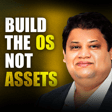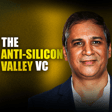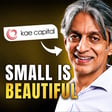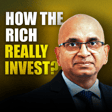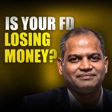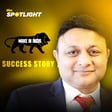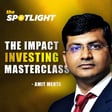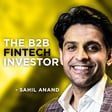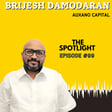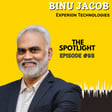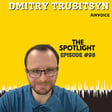
Surviving Downturns and Bootstrapping a Fintech Giant | Sameer Mathur (ROINet)
"You cannot grow the country's GDP if a third of your population is not a part of the financial inclusion piece."
Sameer Mathur highlights the critical link between financial inclusion and national economic growth, emphasizing the vast untapped potential of serving the underserved in India. This isn't just about business; it's about societal impact.
Sameer Mathur, Managing Director of ROINet Solutions, is a former Country Manager at HP who transitioned to entrepreneurship, driven by a desire to make a difference. He co-founded FIA Technology before starting ROINet, which has scaled to 70,000 Customer Service Points (CSPs), generating ₹350Cr in revenue, and employing 500 people. His story is about resilience, strategic pivots, and building a sustainable business in the challenging but rewarding fintech space.
Key Insights from the Conversation:
👉The "Assisted Model" Endures: Digital adoption in rural India is growing, but the need for human assistance at physical CSPs remains strong, driven by trust and familiarity.
👉Founder-Investor Synergy is Vital: Sameer's experience underscores the importance of having investors who are aligned with the company's long-term vision and provide support during challenging times.
👉Bootstrapping is Viable: ROINet's initial growth was fueled by internal resources and leveraging existing relationships, demonstrating the power of bootstrapping.
👉Product Diversification Fuels Growth: Expanding beyond basic banking services to include travel, investments, and lending is crucial for scaling in the financial inclusion space.
👉Hyperlocal approach wins: Creating a large business is about winning multiple, smaller battles. Having a hyperlocal strategy helps.
👉Social impact is a business advantage: ROINet's focus extends to the triple bottom line.
Chapters:
0:00:00 - Introduction: Sameer Mathur's Journey from Corporate to Startup
0:03:44 - The Pivotal MBA and the Financial Inclusion Opportunity
0:07:52 - Founding and Scaling FIA Technology: The BC Model
0:18:08 - Strategic Differences and the Decision to Leave FIA
0:20:28 - ROINet: Building a Diversified Fintech Platform
0:27:10 - The Technology Behind 70,000 Banking Points
0:32:52 - Scaling Sales and Reaching Rural India
0:41:44 - Key Leadership Lessons for Aspiring Founders
0:47:06 - Weathering the Storms: Downturns and Resilience
0:53:54 - Validating the Customer: Biometrics and Trust 0:56:27 - The Future of Fintech and ROINet's Expansion Plans
0:59:37 - Expanding Access to Credit: ROINet's Lending Strategy
#Fintech #India #FinancialInclusion #RuralIndia #Startup #Entrepreneurship #Bootstrapping #VentureCapital #Banking #ScaleUp #Leadership #DigitalIndia #Innovation #ImpactInvesting #SocialImpact #MSME #Lending #Insurance #Investment #BusinessGrowth
